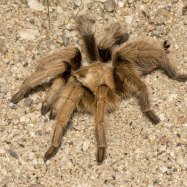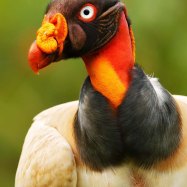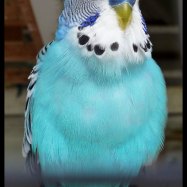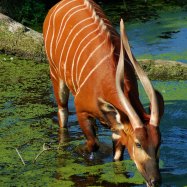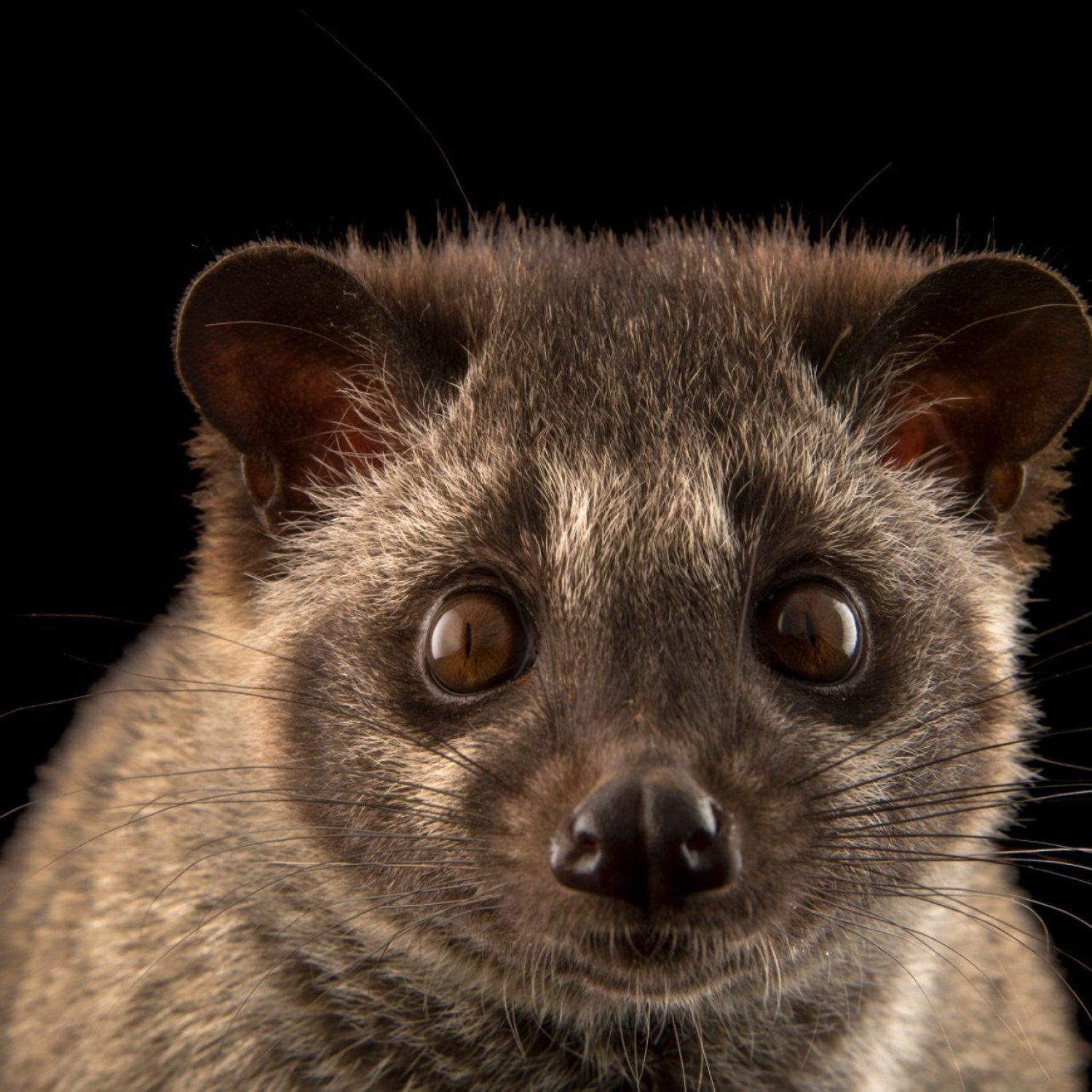
Asian Palm Civet
53 to 97 centimeters
The Asian Palm Civet, found in South and Southeast Asia, is known for its slender body, short legs, and long tail. Belonging to the Viverridae family, these small mammals can grow from 53 to 97 centimeters in length. Their unique appearance and ability to produce a luxury coffee called Kopi Luwak have made them popular among animal lovers. #AsianPalmCivet #Viverridae #KopiLuwak
Animal Details Summary:
Common Name: Asian Palm Civet
Kingdom: Animalia
Habitat: Tropical rainforests, plantations, and suburban gardens
The Fascinating World of the Asian Palm Civet
The animal kingdom is full of creatures that are both mysterious and breathtakingly beautiful. One such animal is the Asian Palm Civet, also known as the Paradoxurus hermaphroditus in scientific terms. This small creature, found in the dense forests of Southeast Asia, is shrouded in fascinating secrets that continue to amaze and intrigue scientists and nature lovers alike.The Asian Palm Civet, also referred to as the 'musang' in Indonesia, has been living in the shadows of its more popular animal counterparts for far too long Asian Palm Civet. However, with its growing popularity as the producer of the world's most expensive coffee, 'Kopi Luwak,' this elusive creature is finally getting the attention it deserves. In this article, we delve into the fascinating world of the Asian Palm Civet and uncover some of its most intriguing features.
The Habitat of the Asian Palm Civet
The Asian Palm Civet is a small mammal that belongs to the Viverridae family, which is a group of carnivorous mammals. This species of civet is endemic to Southeast Asia, and can commonly be found in countries like Indonesia, Malaysia, and Thailand. The animal prefers to live in dense tropical rainforests, which provide abundant food sources, shelter, and protection from predators.Apart from rainforests, the Asian Palm Civet can also be found in agricultural plantations and even urban gardens. The species has adapted well to living amongst human settlements, which has helped increase their range of habitats. However, despite their adaptability, the decline in rainforest areas has negatively impacted the population of this species, highlighting the importance of conservation efforts to protect their natural habitats.
Feeding Habits of the Asian Palm Civet
One of the most interesting features of the Asian Palm Civet is its diet Ackie Monitor. These creatures are opportunistic feeders, meaning they will eat a variety of foods depending on what is available. Their diet is mainly omnivorous, consisting of both plant and animal-based foods. They have a particular preference for fruits, such as berries, mangoes, and figs, which make up a significant portion of their diet.However, what sets the Asian Palm Civet apart from other animals is its ability to eat and digest coffee beans. This unique trait has made them famous for their role in producing the world's most expensive coffee, 'Kopi Luwak.' The beans, after passing through the civet's digestive system, go through a fermentation process that is said to enhance the flavor of the coffee. While the production of this coffee may bring in a significant profit, it is crucial to ensure that ethical practices are followed and the welfare of the animals is prioritized.
Geographical Distribution
As mentioned earlier, the Asian Palm Civet can be found in various countries in Southeast Asia. Its geographical distribution includes countries like Indonesia, Thailand, Laos, Cambodia, Vietnam, and the Philippines. These animals prefer to live in lowland forests, which have dense vegetation and a variety of food sources.While their range of habitats may not be extensive, they play a vital role in maintaining the balance of their ecosystems. As primary consumers, they help control the population of small rodents and insects, ensuring the survival of other plant and animal species in their habitat.
Physical Description
The Asian Palm Civet is a small animal, measuring between 53 to 97 centimeters in length and weighing 2 to 5 kilograms. They have a slender and elongated body, short legs, and a long, tapering tail, which makes up nearly two-thirds of their body length. Their body shape allows them to move swiftly and silently through the dense forests, making it easier for them to hunt for food and evade predators.The animal's coloration varies depending on the species, but generally, they have a coat that is brown or gray with black markings. This coloration helps them blend in with their surroundings, providing camouflage and protection from predators.
The Evolutionary History of the Asian Palm Civet
The Asian Palm Civet belongs to the Carnivora order, which includes other well-known animals such as cats, dogs, and bears. Its evolutionary history can be traced back to the Miocene epoch, which is about 23 to 5.3 million years ago. Fossil records of its ancestors have been found in Europe and North America, indicating that these animals were once widespread.However, over time, the species became restricted to Southeast Asia, where they evolved into various sub-species, adapting to their specific habitats. Today, there are around 20 recognized sub-species of the Asian Palm Civet, each with its unique characteristics and habits.
The Importance of Conservation
Like many other animals, the Asian Palm Civet is facing several threats to its survival. One of the primary reasons for their declining population is the loss of their natural habitat due to deforestation and urbanization. Poaching for their meat and the illegal pet trade also pose a significant threat to this species.Conservation efforts, such as the protection and restoration of their habitats and the enforcement of anti-poaching laws, are crucial in ensuring the survival of this species. Additionally, sustainable practices in the production of 'Kopi Luwak' must be implemented to prevent the exploitation and mistreatment of these animals.
The Asian Palm Civet in Popular Culture
The Asian Palm Civet has made appearances in various forms of popular culture, from traditional folklore to modern-day films and books. In Indonesian folklore, these animals are portrayed as cunning and mischievous creatures, often playing tricks on humans. They are also featured in many traditional art forms, including paintings and carvings.In recent times, the Asian Palm Civet has been popularized in the West due to its role in the production of 'Kopi Luwak.' The coffee has been featured in popular TV shows and films, drawing attention to the animal and its unique digestive process. However, with this increased attention comes the responsibility to ensure that the animals are treated ethically and their habitats are protected.
In Conclusion
The Asian Palm Civet may be a small and elusive creature, but it is full of fascinating features and secrets. From its unique diet to its evolutionary history and cultural significance, there is much more to this animal than meets the eye. As humans, it is our responsibility to protect and conserve this species for future generations to admire and appreciate.By understanding and learning more about the Asian Palm Civet, we can raise awareness about the importance of conservation and the impact our actions have on the survival of other living beings. Let us work together to ensure that this incredible species continues to thrive in its natural habitats and remain an essential part of our planet's diverse ecosystem.

Asian Palm Civet
Animal Details Asian Palm Civet - Scientific Name: Paradoxurus hermaphroditus
- Category: Animals A
- Scientific Name: Paradoxurus hermaphroditus
- Common Name: Asian Palm Civet
- Kingdom: Animalia
- Phylum: Chordata
- Class: Mammalia
- Order: Carnivora
- Family: Viverridae
- Habitat: Tropical rainforests, plantations, and suburban gardens
- Feeding Method: Omnivorous
- Geographical Distribution: Southeast Asia
- Country of Origin: Indonesia
- Location: South and Southeast Asia
- Animal Coloration: Varies depending on the species, but generally brown or gray with black markings
- Body Shape: Slender and elongated body with short legs and a long, tapering tail
- Length: 53 to 97 centimeters
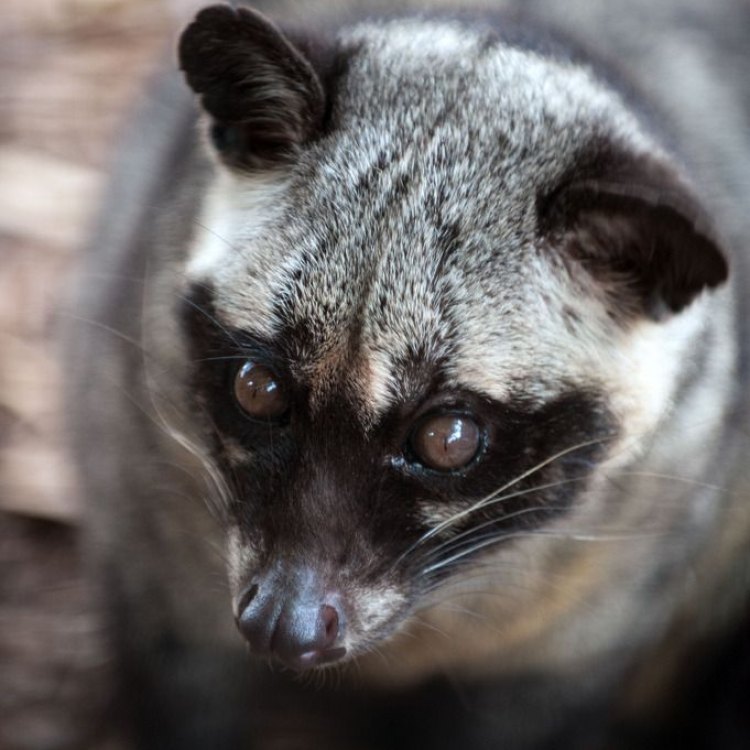
Asian Palm Civet
- Adult Size: Small to medium-sized
- Average Lifespan: Up to 20 years
- Reproduction: Sexual
- Reproductive Behavior: Polygamous
- Sound or Call: Generally quiet, but can produce various vocalizations including hissing and growling
- Migration Pattern: Non-migratory
- Social Groups: Solitary or in small family groups
- Behavior: Nocturnal and arboreal
- Threats: Habitat loss, hunting for fur and meat, capture for the pet trade
- Conservation Status: Least Concern
- Impact on Ecosystem: Seed dispersal through feeding on fruits
- Human Use: Coffee production (Asian palm civets are used in the production of civet coffee)
- Distinctive Features: Large eyes, prominent nose, and a long, pointed snout
- Interesting Facts: Asian palm civets are known for eating coffee cherries and their droppings are used to produce a unique and expensive coffee called civet coffee
- Predator: Large carnivores such as tigers and leopards
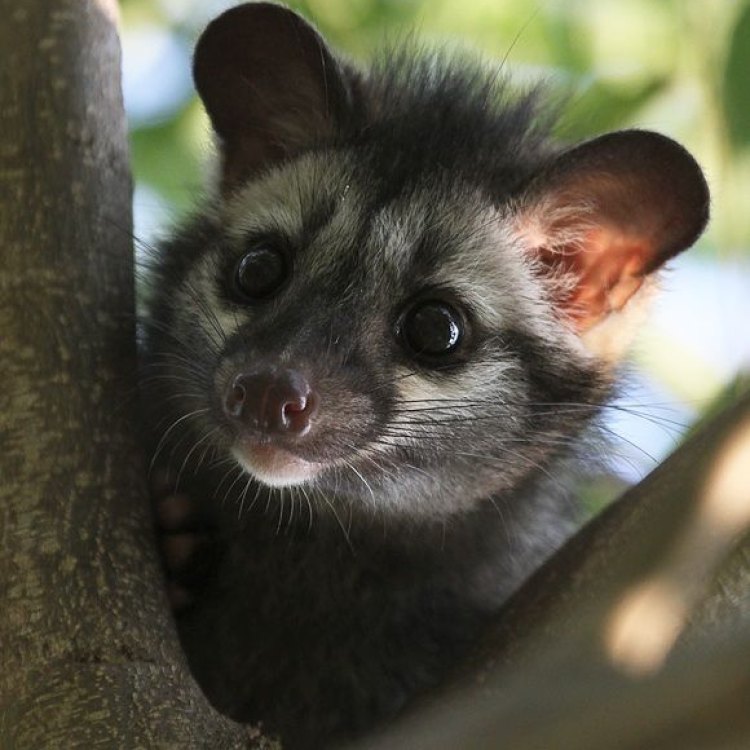
Paradoxurus hermaphroditus
The Fascinating World of the Asian Palm Civet: From Hunter to Connoisseur
The jungles of Southeast Asia are home to a fascinating creature that has captured the attention of both scientists and coffee lovers alike – the Asian Palm Civet. With their distinctive features and unique behaviors, these small to medium-sized mammals have become the subject of study and even controversy due to their involvement in the production of a sought-after coffee known as civet coffee. Let's take a closer look at this elusive and intriguing species and uncover the secrets of the Asian Palm Civet.Adult Size and Average Lifespan
The Asian Palm Civet, also known as the Common Palm Civet, is a small to medium-sized mammal that belongs to the Viverridae family, which includes genets, binturongs, and mongooses PeaceOfAnimals.Com. They typically measure between 53-71 centimeters (21-28 inches) in length and weigh around 2-5.5 kilograms (4.4-12 pounds). They have a long, pointed snout, large eyes, and a prominent nose, giving them a cat-like appearance.
Despite their relatively small size, Asian Palm Civets have a longer lifespan compared to other small mammals, with the potential to live up to 20 years in the wild. In captivity, they have been recorded to live up to 21 years, making them a long-lived and resilient species.
Reproduction and Reproductive Behavior
Like most mammals, Asian Palm Civets reproduce sexually, with the females reaching sexual maturity at around 9-12 months and males at approximately 27-29 months. The breeding season for Civets occurs during the months of December to January, with females giving birth to 2-4 offspring after a gestation period of around 60-70 days.
One of the most interesting aspects of the reproductive behavior of Asian Palm Civets is their polygamous nature Angled Sunbeam Caterpillar. This means that they have multiple mates during the breeding season, with an alpha male dominating the group and competing for the females' attention. This behavior is observed in many other mammal species and is believed to increase the chances of successful reproduction.
Sound or Call and Migration Pattern
Asian Palm Civets are generally quiet creatures, but they have the ability to produce various vocalizations when threatened or during the breeding season. These include hissing, growling, and mewing sounds, which they use to communicate with one another and establish dominance within their social groups.
One of the distinctive features of Asian Palm Civets is their non-migratory nature. They typically stay within a small range of their preferred habitat, which includes forests, plantations, and agricultural areas. This makes them highly territorial animals that prefer to stick to familiar surroundings.
Social Groups and Behavior
Asian Palm Civets are known to be solitary animals, but they may also live in small family groups comprising of up to six individuals. The alpha male dominates the group, while the females and offspring maintain a structured hierarchy within the group. This social structure helps increase their chances of survival in the wild, as they work together to protect their territory and offspring from potential threats.
In terms of behavior, Asian Palm Civets are nocturnal and arboreal, meaning they are active at night and spend most of their time climbing and foraging in trees. They have sharp claws and a prehensile tail, which allows them to grip onto branches and move swiftly through the trees. This behavior also helps them to avoid predators and maintain their territorial boundaries.
Threats and Conservation Status
Like many other species of wildlife, Asian Palm Civets face various threats, including habitat loss, hunting for fur and meat, and capture for the pet trade. Deforestation for palm oil plantations has significantly reduced their natural habitat, and they are often viewed as pests by farmers due to their diet of fruits and crops.
However, due to their wide distribution and adaptable nature, Asian Palm Civets are currently listed as Least Concern on the IUCN Red List. Conservation efforts are focused on preserving their habitat and preventing illegal hunting and capture for the pet trade.
Impact on Ecosystem and Human Use
Asian Palm Civets play a crucial role in their ecosystem, particularly through their feeding behaviors. By consuming a variety of fruits and insects, they contribute to seed dispersal and help maintain a healthy balance in the ecosystem. They also indirectly benefit plants by keeping insect populations in check.
One of the most well-known and controversial uses of Asian Palm Civets is in the production of civet coffee. This unique coffee, also known as Kopi Luwak, is made by harvesting the seeds from coffee cherries that have been digested and partially fermented by Asian Palm Civets. The beans are then cleaned and roasted, resulting in a distinctive and expensive coffee known for its smooth and velvety taste. While this practice has received criticism for its potential harm to the animals and exploitation in some cases, it has also brought attention to the conservation efforts for the Asian Palm Civet.
Predators and Interesting Facts
Despite their small and agile nature, Asian Palm Civets have a few predators in the wild, including large carnivores such as tigers and leopards. They have a few defense mechanisms to protect themselves, including their sharp claws, strong jaws, and agility.
Apart from their involvement in coffee production, Asian Palm Civets are also known for their unique diet of coffee cherries. They are attracted to the ripest and most flavorful cherries, which they consume and partially digest, resulting in the highly sought-after coffee beans.
In some cultures, Asian Palm Civets are also revered as mystical creatures and are believed to bring good fortune and prosperity. They have also been featured in many traditional folk tales and legends, further adding to their fascination and allure.
In conclusion, the Asian Palm Civet is a remarkable and enigmatic species that continues to capture our curiosity. From their distinctive features and behaviors to their role in the ecosystem and human use, these creatures have a significant impact on the world around us. As we continue to learn more about them and their importance in their natural habitat, it's crucial to also promote responsible and ethical practices to ensure their conservation and well-being. So let's appreciate and admire the Asian Palm Civet for all its unique and fascinating qualities, both in the jungle and in our coffee cups.
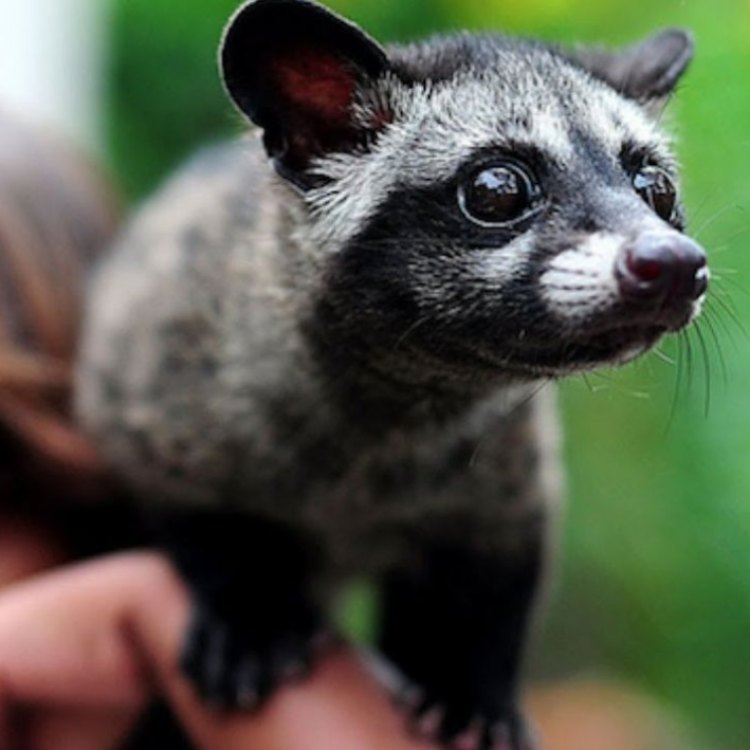
The Fascinating World of the Asian Palm Civet
Disclaimer: The content provided is for informational purposes only. We cannot guarantee the accuracy of the information on this page 100%. All information provided here may change without prior notice.




